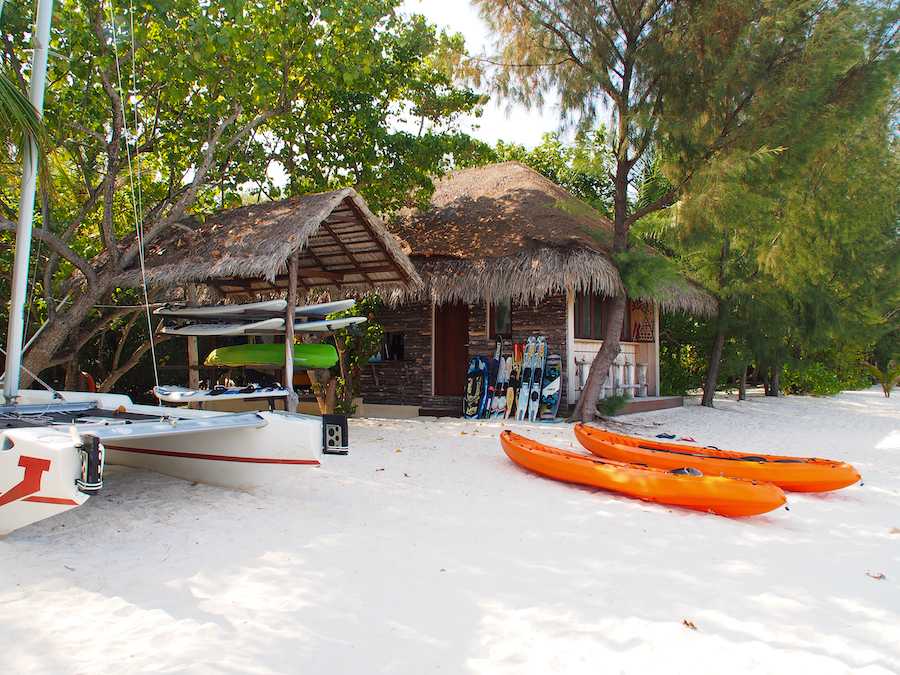In the travel industry, there are some impressively creative ideas that experience providers make work. When looking at new ways of earning revenue, there’s value in exploring equipment rental business profitability.
With the summer season firmly in our rearview mirror, plenty of experience providers are settling into the low season — except those operating equipment rental businesses.
Renting equipment is one way of turning idle stock into recurring revenue. And this approach can help to connect with customers year-round using equipment you already own.
Here, we’ll evaluate what you’ll need to consider when starting an equipment rental business and how you can get started.
Starting an equipment rental business
Tour businesses that rent equipment to guests operate with select inventory that they charge an hourly, daily or weekly rate to rental customers.
Drumming up additional income with outdoor equipment rentals can act as another revenue stream year-round, without becoming your full-time job. You’re still marketing and selling experiences by providing equipment for guests to enjoy.
While outdoor equipment rentals have gained traction during the past 18 months, they’re a viable option for tour and activity operators alike.
During COVID meant experience providers had to pivot, by providing alternatives at a time when in-person group activities weren’t a possibility. Perhaps you’re looking at all of your equipment, questioning how you earn passive income during your off-season.

What’s the most profitable equipment rental business?
Perhaps you already operate a business geared towards guests seeking out adventurous activities. Or maybe you have a passion for embarking on multi-day backpacking trips or skiing in the alpine.
If you’re just starting out with equipment rentals, try to stick with the kind of equipment you know. Doing so reduces the learning curve and simplifies the type of maintenance you’ll need to keep your fleet going.
To have a better sense of what to expect, here are some of the different factors to consider when thinking of starting an equipment rental business.
Activity
As a general rule, equipment that is suitable for all ages and abilities will be the most accessible. That’s not to say there isn’t a market for more specialized equipment.
When you think about equipment rentals, especially heading into different seasons, what comes to mind? The time of year will factor into the level of desire and market attention for your items.
Competition
Start looking at what local competitors are offering. From here, you can discover whether a market exists for the kind of equipment you’re considering renting to guests. Ask yourself:
- What are your customers looking for?
- Is the local market already saturated?
- How can you create a better experience when compared to your competitors?
- What is your competition offering and at what rate(s)?
- Can you position your business as a way for guests to try a new sport without the initial purchase risk?
- How far of a geographic area are you realistically able to target?
Demand
But before you start buying up all of last-seasons ATVs, kayaks and tents, you’ll want to do your research.
What kind of items are guests in your area chomping at the bit to rent? Gauge interest in your area by inputting a few different types of equipment rentals in Google Trends.
And if you’re curious to know more about the tourism search trend tools, you’ll be able to see what travelers are searching for in specific geographic areas.
Start by researching what the market will tolerate. As a result, you’ll develop a sense of the going market rate for different items. The rental rates you set will account for initial purchase cost, market tolerance and desired profit margin.
Fixed costs
How much do you need to pay to store equipment year-round? Beyond your initial investment, look at the operating costs you’ll have from month to month.
Your fixed costs will account for the cost of buying your desired equipment, insurance and your salary, to name a few.
And if you’re planning to operate a storefront — monthly rental fees as well. In addition, you’ll need to look at replacement costs for items over time. You’ll also want to consider how you’ll keep track of your items and what type of approach you’ll take to sales and tracking of your rental gear.

Evaluating the most profitable rental business type
Unless you’ve worked with another business and seen the numbers, a equipment rental business profitability is going to look different for each company. As you start renting your own equipment out, watch your metrics to find out:
- How much you need to rent it to break even/start turning a profit?
- Whether you’ll need seasonal staff to help manage rentals?
- If you can afford the overhead to store equipment year-round?
To help you further evaluate, you’ll see a combination of costs and margins you’ll want to plan out when deciding whether an equipment rental business is right for you.
Operating costs
The costs associated with running an equipment rental business will differ month-to-month based on inventory purchases, overhead and staffing.
Where will you make your equipment rentals available to book? Do you already have an online booking system in place?
Coordinating rentals can easier with an online system that can assist with keeping track of inventory.
You’ll also need to factor in administrative time and the logistics of getting equipment in your guests’ hands. An online booking system like Checkfront can help big-time with making your equipment rental business profitable.
As you grow your equipment rental business, costs will increase and you’ll need to keep track to assess profitability.
Profit margins
For each rental, decide on how much you want to generate over the lifespan of the item. You’ll also need to account for how much use you can get out of the purchase of a new item.
Consider whether it makes more sense to acquire uipment with a lower initial cost. Or, whether a larger up front cost offers better durability and profitability over time.
Evaluate whether you’re able to run a profit even if your business operates a few months per year. Once start your equipment rental business, you might notice a shift in your anticipated profit margins.
Revenue goals
When how much do you want to earn over a period of time where your seasonal rentals will be operating? Ideally, you want to generate enough bookings to break even and generate a profit.
Set rates so they attract customers and are a fair price for renting outdoor equipment. Add up all of your expenses and add a percentage for your goal profit margin.
Generally, business equipment rentals offer hourly, daily, weekly and monthly rental options for customers. Further, a designed drop-off or pick-up location allows guests to return rentals.
Seasonality
Many tour-based businesses are seasonal and outdoor equipment rentals are no different. Before you commit, ask if this can be a sustainable revenue stream for your business?
You’ll have to account for the space to store your items while they’re not being used. When you consider why people choose to rent equipment instead of buying an item, there’s usually an incentive.
For guests, renting is a low-risk way to try a new experience without a high upfront investment.
As an example, I live near a lake in Victoria that’s popular with kayakers and paddleboarders in the summer. Brand new paddleboards run for around $1200 locally and are popular across all ages.
Now that we’re heading into the colder months, a local rental shop is trying to off-load last season’s paddleboards, acquired when bookings were at their peak. Sure, some people may still want to paddleboard, but the demand has decreased. Yet, the overhead costs remain the same despite having the same amount of bookings.
Ideally, your equipment rental business plan should have a long-term strategy in place. A strategy might be discounting used goods for sale in order to help finance new equipment purchases. seasonal aspects of your rental business.

Examples of equipment rental businesses
Experience providers may focus on providing rentals over guided tours and Checkfront is proud to help power their business. As an example, Rent-a-Tent Canada uses Checkfront to power their online bookings. For more on how they’ve grown their business, read their success story.
A company based in San Diego offers Jet Ski Rentals based on hourly or daily rentals and thanks to the balmy weather, this operates as a year-round equipment rental business.
Trek Bikes Las Vegas offers mountain bike rentals in Vegas. Pocono Ski Rentals provides ski and snowboard equipment rentals at the base of Camelback mountain.
And Kananaskis Outftiiters offers cross-country skis, ice skates, fat-tire bikes and snowshoes for winter enthusiasts.
Renting outdoor equipment can be time-consuming without an online booking system in place to coordinate rentals. As you’re evaluating equipment rental business profitability, look at how you want to spend your time.

Final thoughts
Naturally, equipment rental businesses with the capacity to operate year-round have the most profitable rental business potential. Rentals are worth considering for their simplicity and ease of equipment rental business profitability.
Plenty of tour operators work hard for a portion of the year and then enjoy the downtime of a low season. So, if you’re seeking year-round income, you may want to explore rentals and creative revenue options.
Even if you don’t land on an idea immediately, dig into market research and travel trends to see what’s possible for your own equipment rental business. Hopefully, these ideas can set you off on the right foot.
Enjoy the journey in discovering the type of equipment rental business best-suited to you.
Looking to learn more travel tips for your rental business?

Subscribe to the Checkfront Newsletter
Read new tips on how to get more bookings every month.



